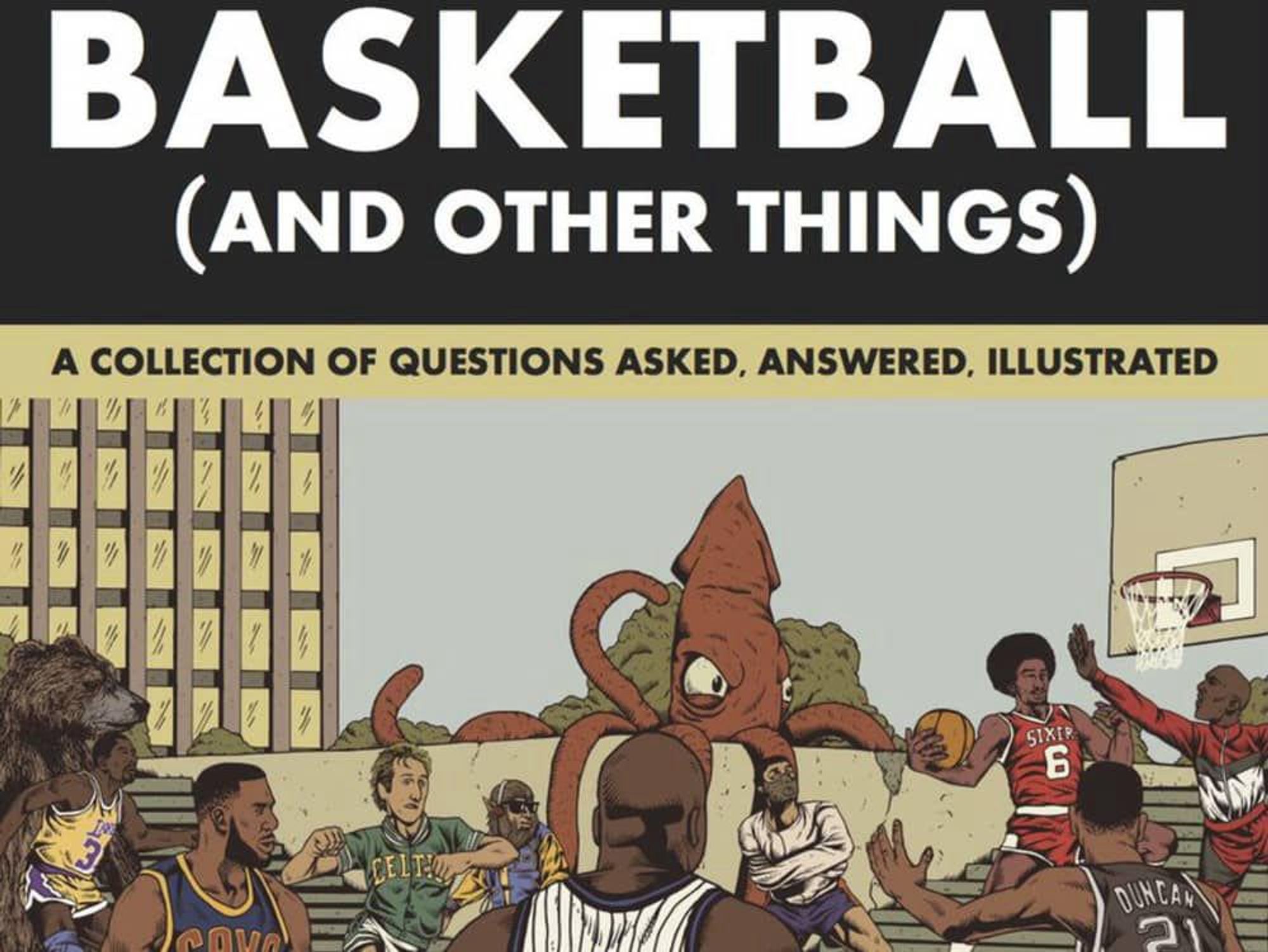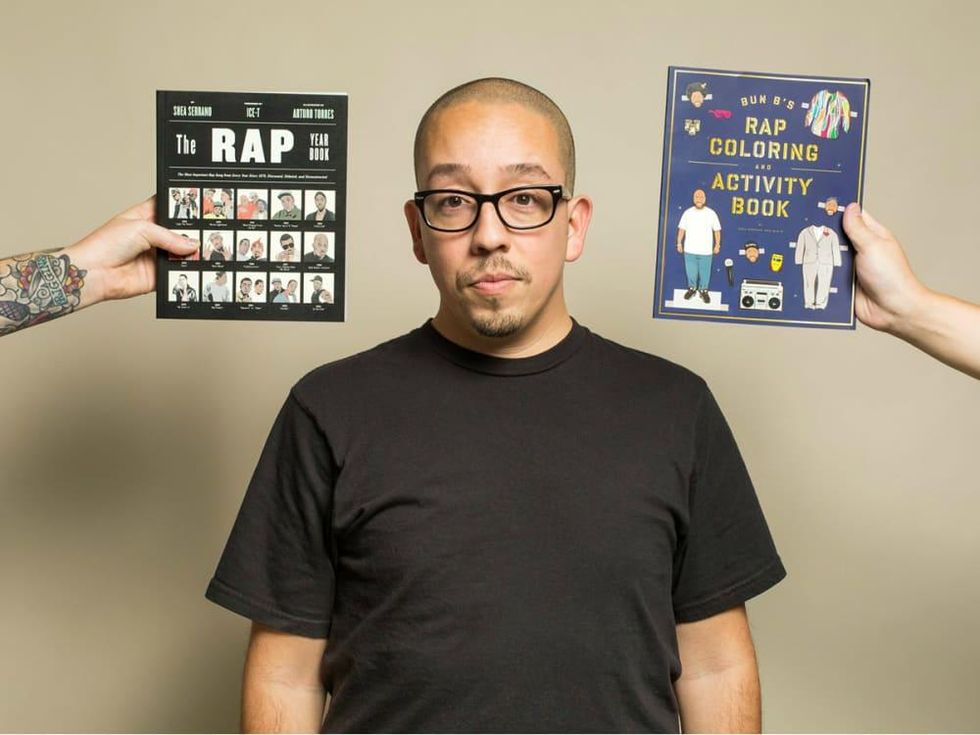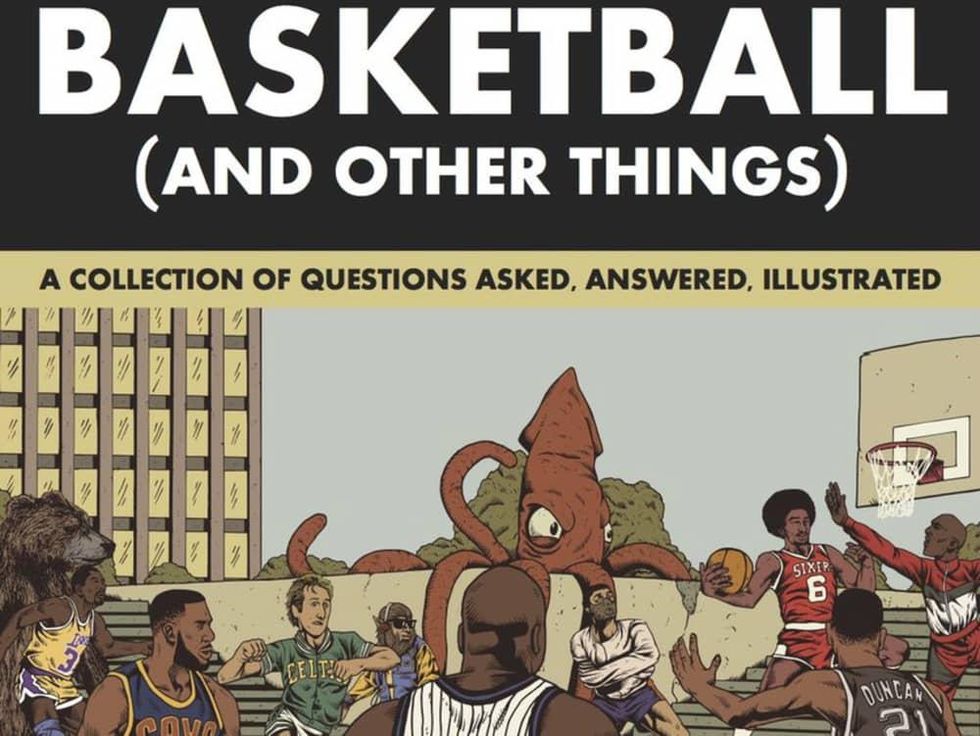that's our home boy
How Houstonian teacher Shea Serrano became a best-selling author, in a few simple steps

Editor's note: In a rare local media interview, Shea Serrano reunites with fellow Houston writer Chris Gray, who was Serrano's music editor at the Houston Press.
The story of Shea Serrano, the Houston middle-school science teacher turned New York Times best-selling author, sounds like a fairy tale — unless you know him, and then it seems like the most natural thing in the world. I first met him as the Houston Press, where his off-the-dome Q&As and timestamped concert reviews were hilarious and insightful.
But Serrano’s talents demanded a more flexible platform, and in 2013, he parlayed a bunch of rapper sketches he had done over spring break into a popular Tumblr page — and then to paper, in Bun B’s Rap Coloring and Activity Book. Two years later came The Rap Year Book, his first collaboration with illustrator extraordinaire Arturo Torres.
His latest, Basketball (And Other Things), stuffs a wealth of hoops information into chapters like “What Year Was Michael Jordan the Best Version of Michael Jordan?” and “Which NBA Player’s Group Are You Joining If the Purge Begins Tonight?”
Serrano also enjoys a national following as a writer for (the now-defunct) Grantland, and currently, The Ringer.
While he makes the rounds promoting his new best-seller, Serrano is finishing a pilot script he’s developing for ABC with sitcom guru Michael Schur (Parks and Recreation, The Good Place), about a college-bound youth’s adolescent life with his mom and five uncles. (Serrano likens it to the hit animated movie Inside Out.) The show is still a long way from making it on-air, he notes: “As soon as the news came out everybody was like, ‘Oh, what channel does it come on?' We’re not anywhere near that.”
CultureMap: Just how big a basketball junkie are you?
Shea Serrano: Pretty big. I’ve been watching it since I was a kid. I watch it all the time now, still. I was writing about it all the time at Grantland and The Ringer.
CM: How young were you when you got interested?
SS: My dad started taking me to games really early, as far back as I can remember. Six, seven, eight years old. This is before the Spurs were good. He works for VIA, which is their Metro bus [system], and when they weren’t good they were basically just giving away tickets. He would get those tickets and we would go together.
CM: After you moved to Houston, how was being a Spurs fan in the Rockets’ city?
SS: It was cool. It was cool because the Rockets were bad. They were never winning; really, they never won any serious playoff games. Wasn’t it like 20 years before they made it back to the Western Conference Finals? It was easy to be a Spurs fan because during that time the Spurs were winning championships. It was especially easy last year when they beat ‘em in the playoffs and I got to talk shit to everyone.
CM: Not surprisingly, your new book is wildly entertaining — and informative. You must have had to do a ton of research.
SS: Yeah. That’s the trick to writing. Like an article that at first glance would seem silly, the way to give it weight is to have actual information in there. That was a thing I learned writing for you at the Press. I would turn in an article and you would say, “This sentence doesn’t have anything to do with the point of this article, get rid of it.”
It’s the same thing [here]. All of the sentences in there point toward a thing, [but] only if you do the research ahead of time and you know all the stuff you need to talk about. So we’re talking about weeks of research for each chapter. Super not fun.
CM: What were some early signs that you wanted to be a writer?
SS: There weren’t any. The earliest signs of me wanting to be a writer were [wife] Larami couldn’t work and we needed money. She had these crazy complications one day — she was at work, she was pregnant, they rushed her to the hospital, [and] she couldn’t work anymore. They told her, “You’re on bed rest now.”
I remember I applied at Target. I applied at Pappadeaux. Both times they told me, “We can’t hire you because you already have a full-time job and you’re not gonna be there when we need you.” So I needed a writer job. I mean, I needed another job I could do. I straight-up Googled “work from home jobs.” Writer was one of ‘em.
CM: How do you think your Twitter personality has played into your success with the book?
SS: Twitter has been essential. Without Twitter the rapper book never gets on the New York Times bestseller list, and if that doesn’t happen, then who knows what doesn’t happen after that? So there’s no way to overstate how important Twitter has been. The only way the book game works for anyone is if you can sell 'em.
That’s the one main thing I learned between the coloring book, and the Rap Year Book. When we did the coloring book I was like,”Cool, all I’ve gotta do is get it in like Rolling Stone or The New York Times or whatever; people will see it there, and then they’ll buy it.” I got in all those places, and we sold 900 copies the first week. Something like that. That’s just not how people are built anymore.
CM: Talk about life on the best-seller list. I saw you were on TNT the other day with Charles Barkley and them. What other kind of opportunities have you had?
SS: On ESPN they’ve got a show called The Jump with Rachel Nichols. A whole bunch of radio stuff. They have a show called The Starters that’s on NBA TV. Some other kind of pregame show called 10 Before Tip. You just get to do a bunch of cool s*** once you have that title by your name, you know?
CM: One of the coolest things I think I’ve ever seen was two years ago around Christmas, you running around giving people money.
SS: That came about because Arturo and I were making these bookmarks to help sell Rap Year Book. But I didn’t want to keep the money because I wasn’t working at the time. I was at Grantland, and Grantland got shut down, but ESPN had to pay out the rest of the contract for the rest of the year.
So, we just took that money and we were like, “What are we going to do with it? Let’s donate it somewhere.” I think we had maybe $1,400 left over, so I was like, “Cool, we’ll just go around and give fast-food employees $100 at different drive-throughs, and we’ll do it for 14 different people.”
CM: How viral did that go?
SS: I mean, it was all over the place, but I don’t know how you measure how viral something goes. But it was neat.
---
Basketball (And Other Things) is out now on Abrams Image books. $19.99.


